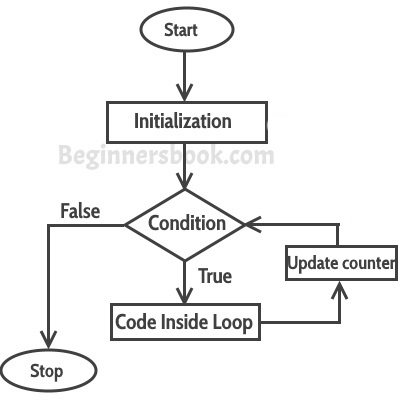- C++ Continue
- How To End A For Loop In C++
- How To Break A For Loop In C++ Cell
- How To Break A For Loop In C Programming
When you get into programming loops in the C language, you discover the joys and dreads of endless, or infinite, loops. These loops continue forever because either the programmer forgot to include a way to exit from the loop or the exit condition is just never met. Either way, endless loops are a pain.
But sometimes a C program contains an endless loop on purpose. This type of construct may seem odd, yet the basis of many modern programs is that they sit and spin while they wait for something to happen. The loop may look like this:
Notice that the conditions inside the parentheses after the for keyword are missing, which is okay. The result is an endless loop in which the statements are checked repeatedly, one after the other: The program is looking for activity somewhere. When activity is found, the program goes off and does something interesting. But most of the time, the program just sits in this type of loop, waiting for something to happen. (The typical word processor may perform thousands of these loops as it waits between keystrokes as you’re typing.)
Enter this source code and save it to disk. Then compile and run the program:


Ways to terminate a loop in C There are two ways we can follow to terminate a loop in c. First one is by the usage of break keyword. Second by the use of exit function. In the while loop there is an if statement that states that if i equals ten the while loop must stop (break). With “continue;” it is possible to skip the rest of the commands in the current loop and start from the top again. (the loop variable must still be incremented). Take a look at the example below.
Yes, you can type. And you can see your text on the screen. But how do you stop?
To stop, you have to break the endless loop, which can be done by pressing Ctrl+C. But that isn’t the way you want your programs to work. Instead, an exit condition must be defined for the loop, which is where the break keyword comes into play.
The C language developers knew that, in some instances, a loop must be broken based on conditions that could not be predicted or set up inside the for statement. So, in their wisdom, they introduced the break keyword.
C++ Continue
What break does is to immediately quit a loop (any C language loop, not just for loops). When the computer sees break, it just assumes that the loop is done and continues as though the loop’s ending condition was met:
Now an exit condition is defined. The if comparison in Line 12 checks to see whether a ~ (tilde) character is entered. If so, the loop is halted by the break statement.
How To End A For Loop In C++
Change your source code so that it matches what was just shown. Compile and run. Now, you can halt the program by typing the ~ character.
How To Break A For Loop In C++ Cell
Note that the if statement can also be written without the braces:

How To Break A For Loop In C Programming
This line may be a bit more readable than using braces.